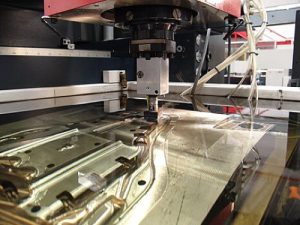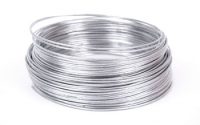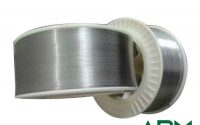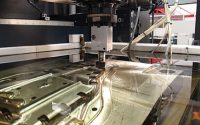Technical Guide to Molybdenum Wire Cutting Processes
Introduction
Molybdenum wire cutting, particularly in the context of Electrical Discharge Machining (EDM), offers significant advantages in precision manufacturing due to molybdenum’s high melting point and excellent conductivity.
This guide provides an in-depth look at the molybdenum wire cutting process, outlining the techniques, operational parameters, and best practices that ensure optimal performance and efficiency.
 [1]
[1]
An Overview of Molybdenum Wire Cutting
Molybdenum wire cutting involves the use of molybdenum, a refractory metal known for its robustness and resistance to high temperatures, as the electrode in wire EDM processes. The high thermal stability and minimal expansion of molybdenum under heat make it ideal for producing precise cuts and intricate shapes in various conductive materials.
Equipment Setup
To achieve these precise cuts, a specific equipment setup is essential.
- EDM Machine Configuration: Ensure the EDM machine is specifically configured for molybdenum wire, taking into account the wire diameter, which typically ranges from 0.05mm to 0.3mm. Adjustments should be made to accommodate the wire’s tension and threading requirements.
- Wire Tension: Proper tension is crucial as it affects the accuracy and surface finish of the cut. Molybdenum wire requires precise tension control to prevent wire breakage and ensure straight cuts.
- Dielectric Fluid: The choice of dielectric fluid can impact the cutting process. For molybdenum wire, use fluids that enhance its electrical properties and help maintain wire integrity during cutting.
Related reading: Why Can Molybdenum Wire Cut Metal?
Cutting Process Parameters
Moving on to the cutting process itself, the voltage and several factors are critical.
- Voltage and Current Settings: Optimal settings depend on the thickness and type of material being cut. Higher voltages may be required for thicker materials, but care must be taken to avoid excessive wear or breakage of the wire.
- Pulse Duration: Adjust pulse durations to control the amount of material removed per spark. Shorter pulses are used for finer, more detailed work, whereas longer pulses are suitable for faster cutting speeds and deeper cuts.
- Flush Settings: Proper flushing with dielectric fluid is essential to remove debris from the cut and cool the wire. Inadequate flushing can lead to poor surface finish and reduced cutting accuracy.
Operational Techniques
In terms of operation, accurate programming of the cutting path is essential.
- Path Programming: Accurate programming of the cutting path is essential. Use CAD/CAM software designed for wire EDM to create precise and efficient cutting paths.
- Multi-Pass Cutting: Implementing multiple cutting passes can enhance accuracy. The first pass removes the bulk of the material, while subsequent trims refine the cut and improve the surface finish.
- Maintenance of Wire: Regularly inspect and replace molybdenum wire to prevent degradation that could impact cutting performance. Implementing scheduled maintenance for the wire and other machine components is critical.
Troubleshooting Common Issues
However, even with careful setup, issues can arise.
- Wire Breakage: This is often caused by excessive tension, rapid wear, or inadequate water flushing. Adjust the tension settings and ensure the dielectric fluid is properly circulating.
- Inaccurate Cuts: Check the alignment and tension of the wire. Reassess the programmed cutting paths for errors and recalibrate the machine if necessary.
- Surface Finish Concerns: Adjust pulse settings and ensure adequate flushing. Consider using finer molybdenum wire or multiple finishing passes.
Conclusion
Molybdenum wire cutting with EDM is a precision process that requires careful setup, detailed attention to operational parameters, and regular maintenance. By following these guidelines, manufacturers can achieve high-quality cuts with excellent dimensional accuracy and surface finish, maximizing the benefits of molybdenum’s unique properties for advanced manufacturing applications.
Advanced Refractory Metals (ARM) provides a wide array of Molybdenum products, including Molybdenum Wire, Molybdenum Bar, and Molybdenum Sheet. We offer customization options for all sizes and finished parts as well. Send us an inquiry if you are interested
Reference:
[1] Electrical discharge machining. (2024, March 2). In Wikipedia. https://en.wikipedia.org/wiki/Electrical_discharge_machining



